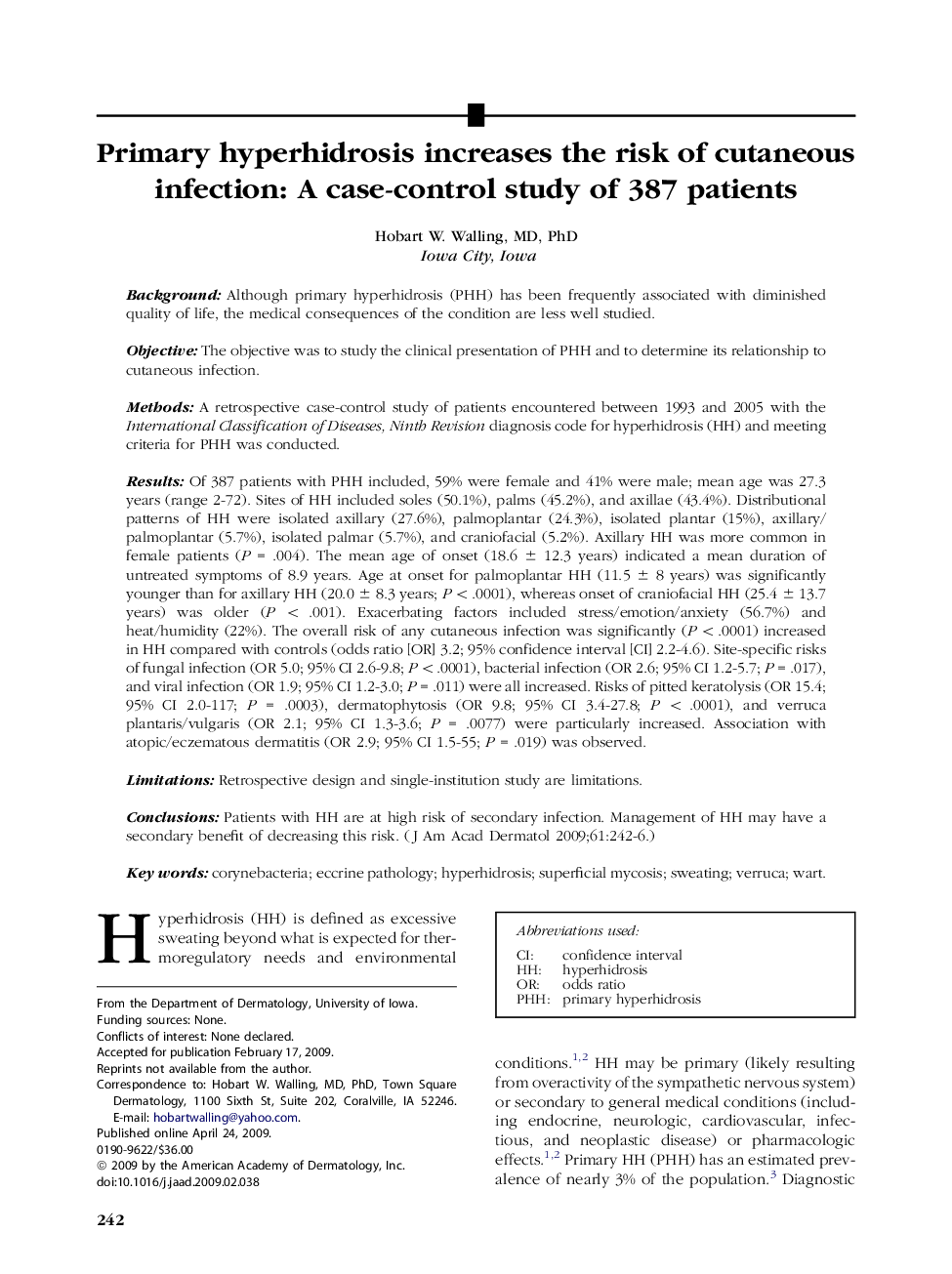| کد مقاله | کد نشریه | سال انتشار | مقاله انگلیسی | نسخه تمام متن |
|---|---|---|---|---|
| 3209459 | 1587604 | 2009 | 5 صفحه PDF | دانلود رایگان |

BackgroundAlthough primary hyperhidrosis (PHH) has been frequently associated with diminished quality of life, the medical consequences of the condition are less well studied.ObjectiveThe objective was to study the clinical presentation of PHH and to determine its relationship to cutaneous infection.MethodsA retrospective case-control study of patients encountered between 1993 and 2005 with the International Classification of Diseases, Ninth Revision diagnosis code for hyperhidrosis (HH) and meeting criteria for PHH was conducted.ResultsOf 387 patients with PHH included, 59% were female and 41% were male; mean age was 27.3 years (range 2-72). Sites of HH included soles (50.1%), palms (45.2%), and axillae (43.4%). Distributional patterns of HH were isolated axillary (27.6%), palmoplantar (24.3%), isolated plantar (15%), axillary/palmoplantar (5.7%), isolated palmar (5.7%), and craniofacial (5.2%). Axillary HH was more common in female patients (P = .004). The mean age of onset (18.6 ± 12.3 years) indicated a mean duration of untreated symptoms of 8.9 years. Age at onset for palmoplantar HH (11.5 ± 8 years) was significantly younger than for axillary HH (20.0 ± 8.3 years; P < .0001), whereas onset of craniofacial HH (25.4 ± 13.7 years) was older (P < .001). Exacerbating factors included stress/emotion/anxiety (56.7%) and heat/humidity (22%). The overall risk of any cutaneous infection was significantly (P < .0001) increased in HH compared with controls (odds ratio [OR] 3.2; 95% confidence interval [CI] 2.2-4.6). Site-specific risks of fungal infection (OR 5.0; 95% CI 2.6-9.8; P < .0001), bacterial infection (OR 2.6; 95% CI 1.2-5.7; P = .017), and viral infection (OR 1.9; 95% CI 1.2-3.0; P = .011) were all increased. Risks of pitted keratolysis (OR 15.4; 95% CI 2.0-117; P = .0003), dermatophytosis (OR 9.8; 95% CI 3.4-27.8; P < .0001), and verruca plantaris/vulgaris (OR 2.1; 95% CI 1.3-3.6; P = .0077) were particularly increased. Association with atopic/eczematous dermatitis (OR 2.9; 95% CI 1.5-55; P = .019) was observed.LimitationsRetrospective design and single-institution study are limitations.ConclusionsPatients with HH are at high risk of secondary infection. Management of HH may have a secondary benefit of decreasing this risk.
Journal: Journal of the American Academy of Dermatology - Volume 61, Issue 2, August 2009, Pages 242–246